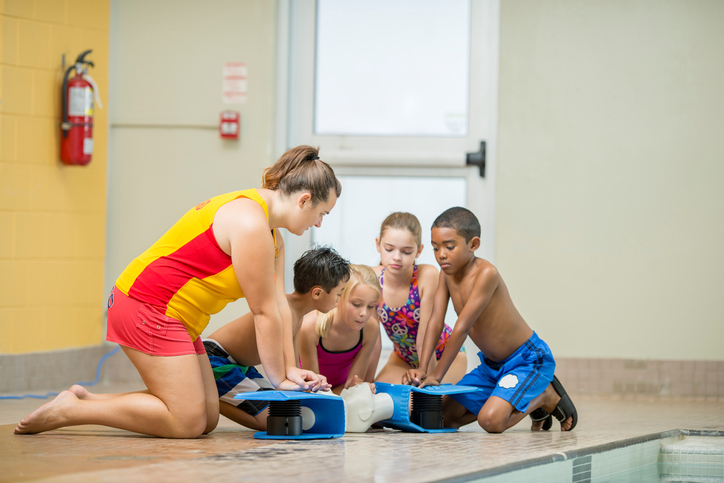
Here is a goal for you this summer: Become a Water Safe Family!
This involves three things: Education, Prevention, and Supervision. While kids learn lots about this in swim lessons at Little Otter, it’s up to parents to make sure all of it happens so that families can be water safe year-round.
There are lots of situations to consider. Some involve swimming pools, but a few don’t. Did you know that the many drowning incidents involving young children happen because children are left in bathtubs alone? And when children are around swimming pools, more accidents happen because unsupervised children fall into pools. These aren’t our facts. This information is from the National Safety Council – an authority on child safety and risk factors associated with water-related accidental deaths. Did you know that the risk factors for drowning don’t go away when it’s cold outside because falling into cold water results in cold shock and physical incapacitation – and this condition decreases the chances of surviving the incident?
First, there’s Education:
- Make a list of the risks and dangers in and around your home. Each home is unique and can have hidden dangers that are not so obvious when first creating your list! Simply creating this list is a great first step to keeping your entire family safe year round.
- Little Otter’s swim lessons emphasize safe water practices that can be reiterated whenever family members are swimming at your home’s, neighbor’s, hotel’s or community’s pool.
- Learn CPR in the event of an emergency. The more knowledgeable and skilled you are in life-saving best practices, the safer you can help your family be. You will know the best things that you can do in emergencies until more help arrives.
- Share water safety practices with babysitters/caregivers – especially if you have a home swimming pool.
Next, Prevention:
- The home swimming pool is still the biggest risk factor for drowning. Reduce temptation for kids to go in the water when it’s not the time for swimming by removing from the pool area any toys and floats that may draw them to the water. Also, move any furniture kids could climb on to get to the water away poolside. Be aware that pool covers often used in the colder months trap children underneath and make it more difficult to see a child who has fallen in. This creates a false sense of security and a reduction in monitoring this area during colder months.
- Set clear rules about water. Repeat the rules and even have your kids repeat the rules back to you frequently.
- Be sure that all access points (gates and doors) to a pool are securely locked.Pools should have a 4-foot fence around and self-closing, self-latching gates.
- Babies and young children can drown in as little as an inch of water, so special precautions you should consider with young ones near water are: Empty or remove containers that can hold water (buckets, watering cans, pet dishes).
- Consider toilet seat locks since even these seemingly harmless fixtures can be dangerous to a young, curious child.
- Check pet doors because small children can easily crawl through them. This may be a hidden access to water!
- Do a safety check of a home or facility where your young one may be visiting (friend, grandparent, caregiver) and do a safety rule review – especially if they have a pool.
And Finally, Supervision:
This may be the last category in becoming a Water Safe Family, but it is the key to the rest!
- Even if kids are educated on water safety rules, even if you take every precaution for prevention, you must supervise them to ensure that rules are followed and precautionary measures aren’t circumvented.
- Never leave children unattended in the bathtub or near any water, even for just a minute.
- Know where your children are. If you miss seeing your child for a few minutes and don’t know where they are or what they are doing, check on them. If you have a pool, don’t look upstairs or our front first, always check the pool first. Every second counts!
- Anytime your children are in a pool – whether it’s yours or someone else’s – make sure you supervise them. Adults should always be present if children are in the water.
- Be adamant about education, prevention and supervision and your family will be a water safe family.


Conversations